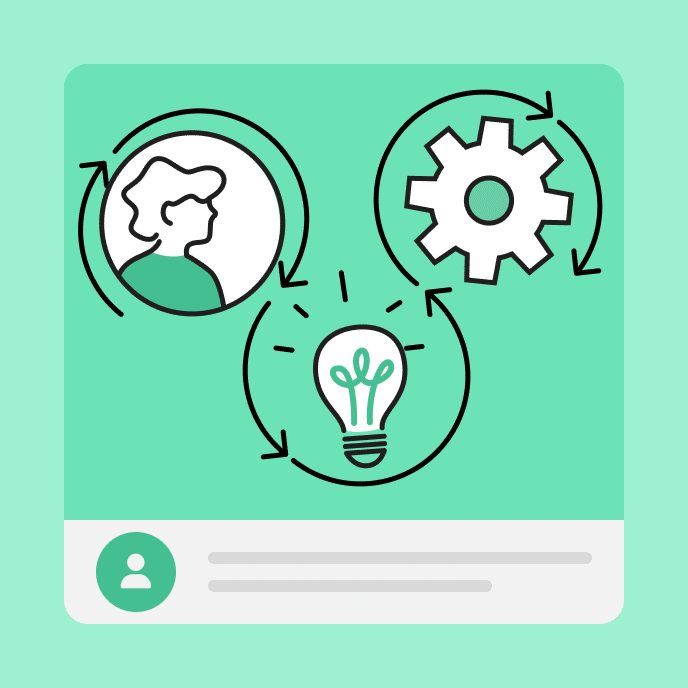From 0 to 100: Translating Global Customer Service Training
Discover how to scale customer service training across languages and markets. Learn tips, tools, and strategies to boost global team performance.

Break the language barrier, not the customer experience
If you’re part of an expanding company, you know the growing pains all too well. With new markets come different languages, time zones, and cultures. And when an organization goes global, training programs often fall behind.
This is particularly true for customer service teams. The central question that many customer service leaders face is, “How do we deliver consistent, high-quality support worldwide?” Scaling training across regions and languages often feels like an uphill battle, and when agents can’t learn in their preferred language, it doesn’t just affect their performance—it impacts every customer they come in contact with.
In fact, according to a Forbes study, employees are more productive when managers communicate with them in their native language—a clear reminder that language access directly influences team effectiveness and customer outcomes.
In this blog post, we’ll explore how you can scale training, eliminate language barriers, and empower your team to succeed, no matter where they are or what language they speak.
Key Takeaways
- Language matters. Training your global support team in their preferred language leads to faster learning, better performance, and more confident customer interactions.
- Design for scale. Modular, flexible content makes it easy to adapt training for different languages, regions, and roles, without starting from scratch every time.
- Tools make the difference. The right platform supports real-time translation, localized delivery, and flexible timing, helping you train faster and improve customer satisfaction worldwide.
The importance of scaling customer support training
Let’s say you’re onboarding a new customer service agent in Mexico City. This person has great experience and is eager to make an impact. But if your training materials are only available in English, they’ll likely spend more time translating the content than absorbing it. Meanwhile, service tickets are piling up, and customer satisfaction is slipping.
What might seem like a minor inconvenience is actually a major operational risk. When agents can’t train in their preferred language, it has ripple effects throughout the customer experience:
- Onboarding slows to a crawl, delaying their time to full productivity.
- Without a full grasp of organizational policies, customer interactions suffer.
- Agents struggle to meet performance goals, leading to turnover.
When support teams struggle due to language barriers, customers take notice. These inconsistencies can erode customer trust, especially in competitive global markets where there are plenty of alternatives to choose from. To deliver consistent customer training across various languages, it’s time to move past one-size-fits-all training. Your team and your customers deserve better.
5 tips for scaling CS training for multilingual support
Scaling customer service training for global teams is about more than just translating documents. It’s about building a system that works across different languages, cultures, and learning styles. Whether you’re launching in new markets or growing your existing support team, here are five strategies that will help you scale with confidence:
1. Prioritize language access from day one
Translation isn’t the final step in the process. Bake it into the training strategy from the beginning. Plan for various languages up front so that you’re not scrambling to adapt content after you’ve rolled it out.
Consider using a content platform that supports real-time translation or multilingual course duplication to streamline updates and launches.
2. Use modular, reusable content
Break training into smaller, reusable chunks that you can easily update and localize without having to recreate full courses. This helps agents learn at their own pace, improving engagement and retention.
For example, a global logistics company might build a library of short, scenario-based modules that could be mixed and matched across regions, significantly reducing development time.
3. Leverage regional insights to customize examples
Don’t rely on generic training. Work with local customer service managers or experienced agents to adapt content for regional nuances. This ensures better understanding and more relatable training experiences.
Keep in mind that cultural context affects how agents handle customer interactions. Training should reflect the real-world situations they actually face.
4. Automate where you can, but keep the human touch
Automation helps you scale, but don’t sacrifice quality. Look for tools that offer high-quality translations, not just machine-generated ones. Combine automation with expert review to ensure clarity, accuracy, and brand consistency.
Consider setting up workflows that route translated content through a quick review by native speakers or in-market reviewers.
5. Measure what matters
Track training completion, feedback, and performance data across regions. Look for trends in customer satisfaction, ticket resolution time, or recurring errors. This will help you spot and fix issues quickly, before they impact the customer.
Choosing the right tools to scale customer service training globally
When your support team is global, the tools you choose can make or break your training program. The wrong setup can create bottlenecks, inflate your localization costs, and lead to uneven performance across teams.
To scale training efficiently without sacrificing quality, you need purpose-built tools that can keep up with your team’s pace and your company’s growth. Here’s how you can make those decisions wisely:
Look for platforms that support real-time translation
Manual translation workflows are too slow for fast-moving support teams. Choose tools that offer real-time, accurate translations right out of the box. That way, you can update policies, launch new programs, and scale quickly across different languages.
What to look for: Tools that let you create once, then easily duplicate and localize training content without sacrificing quality or clarity.
Find tools that match the pace of your agents
Customer support teams move fast. Your training platform should be able to keep up. Opt for tools that let agents learn at their own pace, on their own schedule, without disrupting the flow of live support.
Ideal features include mobile-friendly delivery, modular learning, and localized UI so agents can jump in and out of training without missing a beat.
Balance centralized control with local flexibility
Training must be consistent globally but flexible enough to meet regional needs. The best platforms let you manage content centrally while allowing for localized examples, policies, or compliance training.
For example, your team in Argentina will see different customer scenarios than your team in South Korea, yet each will walk away with the same core skills and knowledge.
Let Articulate Localization do the heavy lifting
With Articulate Localization, built into Articulate 360, you can translate, validate, and manage customer service training for your global team—all within the platform you already use. Instantly create multiple language versions of your course using secure translation, then collaborate with language validators in real time to ensure accuracy and reduce rewrites. You can also manage and publish all language versions as a single course, streamlining your entire workflow and making it easier than ever to deliver consistent, high-quality training across languages and regions.
Train global, support local, and scale with confidence
Scaling customer service training across regions and languages is easier when you combine the right strategy and the right tools. With localized content, flexible delivery, and platforms that feature real-time translation, your global support teams can benefit from customized learning experiences that meet them where they are. As a result, you’ll empower them to deliver the kind of support that boosts customer loyalty.
Ready to go deeper on localization? Check out our blog post, 6 E-Learning Localization Strategies for Workplace Training, for practical tips to make your content resonate across cultures and languages.
You may also like

What is Sociocultural Theory?
Discover sociocultural theory, explore its core principles, and learn why Vygotsky’s methods became critical to learner success in the classroom and the workplace.

